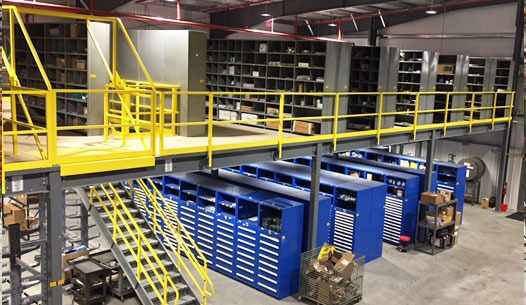Warehouse racking plays a critical role in optimizing storage, streamlining operations, and ensuring safety within logistics and supply chain systems. Whether you're managing a small storage facility or a sprawling distribution center, understanding the intricacies of warehouse racking is key to achieving maximum efficiency and productivity.
What Is Warehouse Racking?
Warehouse racking refers to the structured storage systems used to organize and store goods within a warehouse. These systems typically involve shelves or platforms arranged in vertical tiers, enabling facilities to utilize vertical space effectively while keeping inventory accessible.
The primary goal of warehouse racking is to create a systematic storage solution that reduces clutter, improves inventory management, and ensures workers can safely and quickly access goods. Various types of racking systems cater to different storage needs, making it crucial to select the right type for your operations.
Types of Warehouse Racking Systems
Selective Racking Selective racking is the most common and versatile racking system. It allows direct access to each pallet, making it ideal for warehouses with diverse inventory and frequent stock rotation. However, it may not be the most space-efficient option.
Drive-In/Drive-Through Racking This system is designed for high-density storage. Drive-in racking allows forklifts to enter from one side, while drive-through racking permits access from both sides. It's perfect for warehouses dealing with large quantities of uniform products.
Push-Back Racking Push-back racking uses a gravity-based system where pallets are loaded onto inclined rails. As one pallet is removed, the next one slides into position. This is a space-saving solution for managing medium-turnover inventory.
Pallet Flow Racking Also known as dynamic racking, this system uses gravity rollers to move pallets along a sloped surface. It’s ideal for first-in, first-out (FIFO) inventory management and high-demand goods.
Cantilever Racking Cantilever racking is suitable for storing long, bulky items such as pipes, lumber, or steel. It consists of horizontal arms extending from a vertical column, offering open-front storage for irregularly shaped items.
Benefits of Efficient Warehouse Racking
Implementing a well-planned warehouse racking system can significantly enhance operations:
Space Optimization: Maximizing vertical space reduces the need for expanding warehouse footprints.
Improved Inventory Management: Organized racking systems make it easier to track and locate products.
Enhanced Productivity: Workers can retrieve and store items more quickly with an accessible layout.
Increased Safety: Properly installed racks prevent accidents and reduce product damage.
Factors to Consider When Choosing a Racking System
Selecting the right warehouse racking system depends on various factors:
Inventory Type and Volume: Consider the size, weight, and turnover rate of the products.
Available Space: Evaluate the warehouse layout and ceiling height to maximize storage capacity.
Budget: Balance the initial investment with long-term operational efficiency and scalability.
Material Handling Equipment: Ensure compatibility with forklifts or automated systems.
Maintenance and Safety Tips
Regular maintenance and adherence to safety protocols are essential for prolonging the lifespan of your racking system and preventing workplace accidents. Here are some tips:
Conduct routine inspections to identify and repair damage promptly.
Train employees on proper loading and unloading techniques.
Use safety measures such as load limit labels, rack protectors, and secure anchoring.
Conclusion
Warehouse racking is more than just a storage solution; it’s a cornerstone of efficient warehouse operations. By understanding the different types of racking systems and tailoring them to your specific needs, you can optimize space, improve workflow, and enhance safety. Whether you're upgrading your existing system or designing a new warehouse layout, investing in the right racking system is a strategic move that yields long-term benefits.
For More Info:-






Write a comment ...